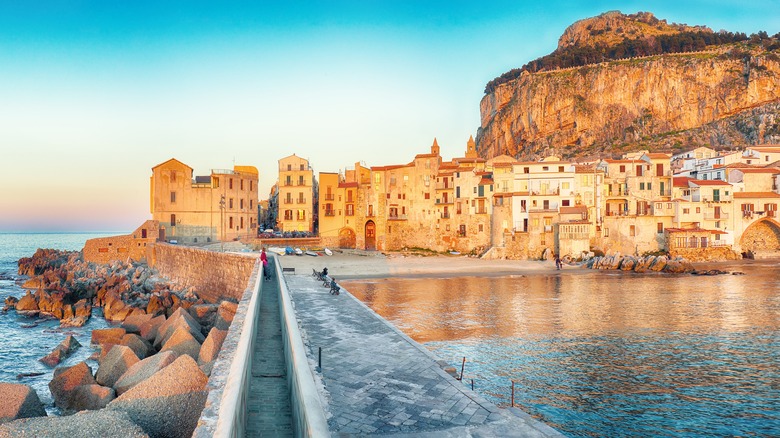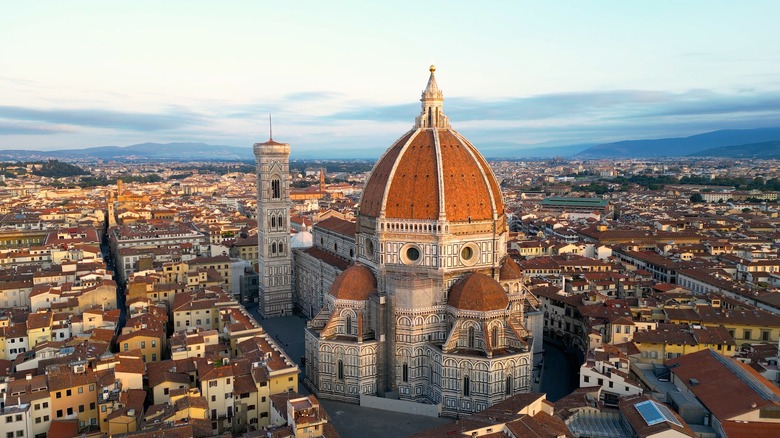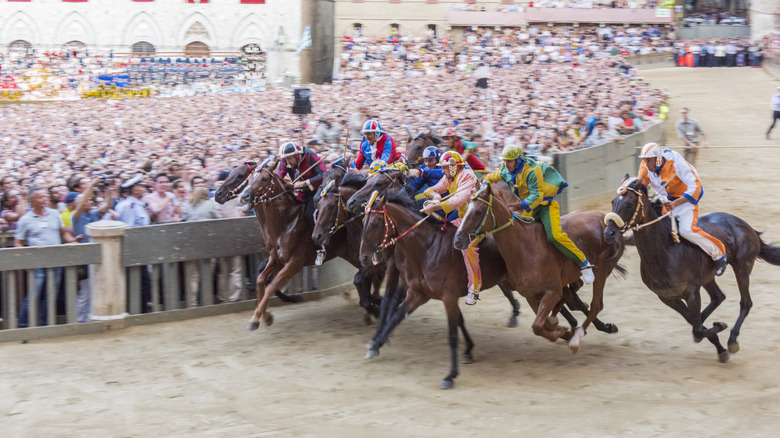Why Some Tourist Hot Spots In Italy Might Seem Extra Sleepy In August
An Italian retreat seems to be most people's idea of an idyllic summer break, lounging on the sandbanks that brush up against the Mediterranean Sea and overindulging just a little too much on pizza and pasta. However, you may want to hit pause on your travel plans before officially booking your plane ticket. If you've never heard of Italy's "August Shutdown," this historical tradition still has a significant influence over the entire nation. This month-long "vacation" has been a cultural custom for centuries, resulting in several of Italy's smaller cities turning into near ghost towns come August. Locals pack their bags and leave their central hometowns, favoring the coastlines and mountains over urban city centers like Rome, Florence, and Milan.
August can either be a blessing or a curse for travelers, depending on your destination of choice. Many major cities often see a drop in hotel rates because of the reduction in local businesses operating during August — an excellent time for visitors to live out their Italian travel dreams on a budget. While the summer month doesn't promise fully crowd-free streets, fewer locals mean shorter lines for open mainstream attractions and reduced wait lists at popular restaurants. If it's a coastal vacation with hidden beaches you're seeking, you may want to think again. Considering most locals flock to the sun-soaked shores of coastal towns, prices tend to soar in these regions, making the urban metropolis a traveler's best friend in August.
August brings uncomfortable heat to Italy
There's more than one reason Italy tends to see a decrease in tourism around certain parts of its country. One of the primary factors encouraging locals to vacate their hometowns is the heat. August is easily the warmest month of the year, bringing excessive heatwaves that drive locals out of Italy's central provinces in favor of cooler areas along the coastline. May and June are the most popular times for an Italian summer retreat before the weather turns dials up to scorching and an uncomfortable humidity settles over the land. If unfavorable weather conditions are a vacation deal-breaker, you'll want to avoid cities that tend to get hit with extreme humidity. In central and southern regions like Rome and Florence, temperatures can easily soar into the 90s, so these beautiful Italian cities are best to visit in the fall.
Coexisting with the intolerable climate has its upsides. Several local businesses, like individually owned cafes, boutiques, and bars, use the annual August heatwave as a window of opportunity to squeeze in some extra vacation time. However, most businesses that close are factory operations, giving workers time to rest and relax with their families. Although many locals spend the month of August outside of their hometown, major attractions, like museums and churches, remain open. However, it's becoming increasingly common for smaller business owners to take only one or two weeks off in August to reduce lost income during the peak summer tourist season.
Summer is a season of rest and festivities in Italy
Italy's great August Shutdown is not a new concept by any means. This national tradition first came to pass during the reign of Emperor Caesar Augustus. After establishing the annual Ferragosto holiday, the Roman Emperor declared an annual period of rest for the nation's workers. While this tradition originally dates back to at least 18 B.C., the country still abides by this ancient custom. After the Christian church rose to power in Italian culture and the Feast of the Assumption was declared a national holiday on August 15, the tradition was sustained throughout the month. The Palio of Siena, a biannual horse race, is a civic holiday in Italy, held in Siena on August 16. This ancient cultural tradition functioned as a mediator between social rivalry among Italian districts, known as contrade, marking it as the most anticipated event of the year in Siena.
While the city holds two annual races, there's a particular excitement surrounding the August 16 race because it was dedicated to the religious holiday, the Virgin Mary's Assumption (coinciding with Ferragosto). With the Virgin Mary's Feast of Assumption, Ferragosto, and the Palio di Siena all falling within the same month, it makes sense for locals to embrace the month of August as a season of rest, travel, and celebration. Today, Italians still happily embrace the concept of an August vacation, allowing them the time and space to disconnect from their everyday routines, rest from work, and spend time with family and friends. The festival is also a great way to immerse yourself in Italian culture!


